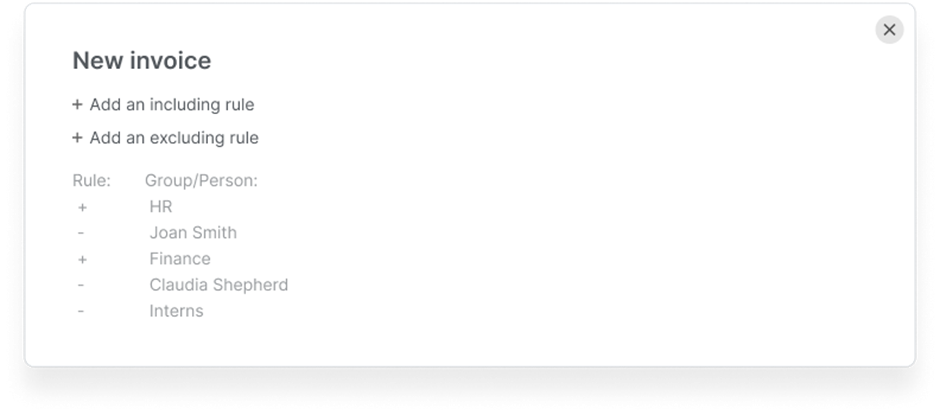We’re an IT consultancy that helps clients to develop simple, user-centric solutions
Here’s the Strateral fix we applied to an essential HR system development that had been stuck in a backlog for ages. Originally the resources required were estimated so high that no one wanted to touch it. Our solution cut that effort by 75%, making it not only far more manageable, but resulting in a much more user-friendly system as well.
The client’s challenge
Their HR solution lacked several critical features
which caused ongoing friction in internal communication and slowed business growth. One of these issues was a lack of essential flexibility.
“The notification system accepts only group notifications. But sometimes we need to send messages only to selected people. We also sometimes need to send a notification to a group of people – i.e. a department – but exclude some members of that team from receiving it.”
There were two key issues in the software they were using
1. They couldn’t send a notification to selected employees from various departments at the same time – the software could only send messages to entire groups.
2. Selecting a group (e.g. the HR department) meant that all the group members would always receive the notification – they couldn’t exclude one or more employees.
The in-house development team suggested the following solution:
1. An ‘including rule’, to select more persons to the message recipients’ group.
2. An ‘excluding rule’, to remove some team members from a selected department.

A bit over-engineered, perhaps?
A Strateral solution
As an external IT consultant, I could evaluate the technical solution proposed by the in-house development team with a broader view across the needs of all stakeholders – finding the balance between future-facing flexibility and actual user needs.
Evaluating the proposed technical solution
I noticed that users would be able to click the ‘Add excluding rule’ even when there were no groups or persons added in the first place. Yet it only made sense to consider excluding rules after all including rules were added. We had to approach this problem from a completely different angle.
We got insights from the various teams who used the HR system
From experience we know development teams don’t always see the big picture or fully understand user needs. So sometimes we need to re-clarify the exact goals users have, as well as the systems they’re already familiar with, so we can ensure cohesion and efficient solutions.
We asked which other software they used most often and – unsurprisingly – we found they mostly used Microsoft tools.
We redesigned the feature to resemble something they already knew
I immediately thought about the way the Outlook recipient field works. When you click on a team, the field expands, and then you can select and delete individuals from the list.
The company would have to add several new groups to ensure that all employees are in the relevant group – e.g. ‘HR Recruiters only’ or ‘HR without interns’ – but this was a limitation the internal users were happy with.
Involve users to clarify and simplify their requirements
An everyone-wins outcome
With a much simpler solution than the previous proposal, the client’s development team were able to complete the project in 1 Scrum sprint, rather than 4 – a time saving of 75%.
1. The client
delivered the new feature everyone wanted, using fewer resources.
2. The dev team
delivered the new feature everyone wanted, using fewer resources.
3. Users
can work more efficiently by communicating with specific recipients.
A user-centric system delivered in just one Scrum sprint
Key takeaways
1. Don’t strive for impossible perfection.
3. Versatile features are only good if they’re needed.
2. Think of ways to make solutions simpler.
4. Design functions your users will recognise.
Simplify your IT solutions with Strateral

